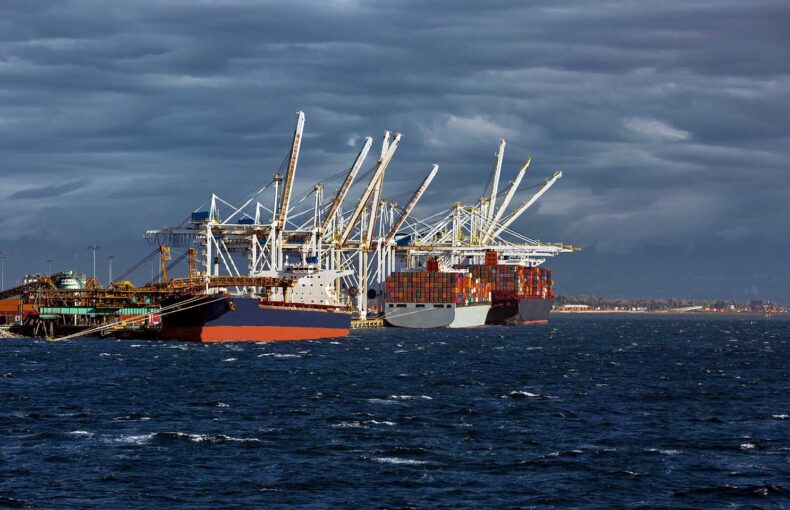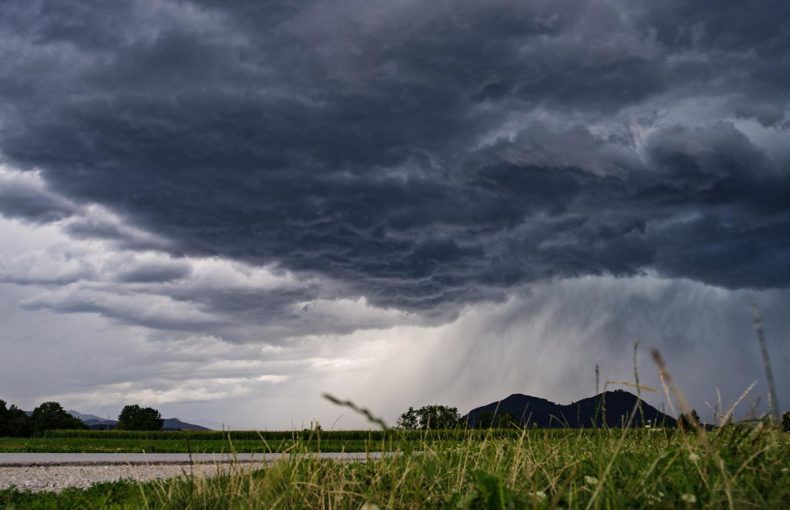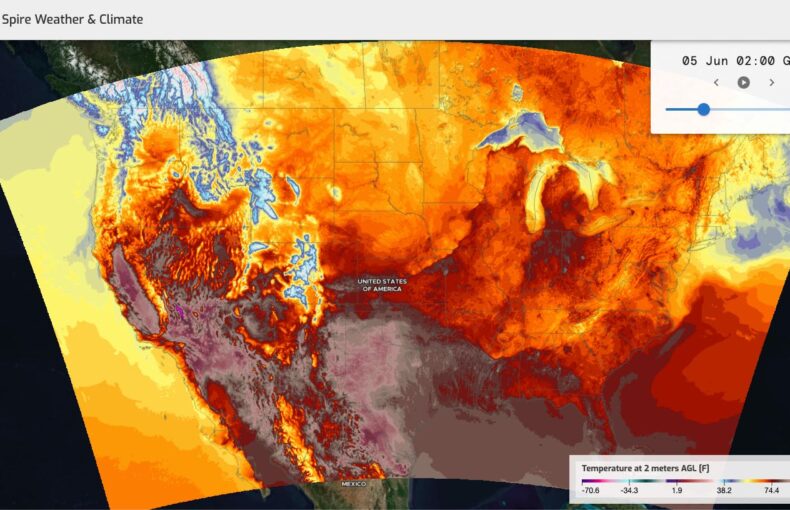Economic impacts of escalating weather disasters
Mitigating the financial and operational risks of climate change-fueled extreme weather.
As weather and climate disasters escalate in frequency and severity, they inflict substantial economic losses and pose significant challenges to businesses and communities. Historical data reveals a stark reality: over the past few decades, both the number and cost of billion-dollar weather events have surged dramatically in the United States. The rising frequency of billion-dollar weather disasters underscores the urgent need for effective risk mitigation strategies. Understanding these trends and taking proactive measures is crucial for preparing for the challenges ahead.
“Climate change is already fueling extreme weather across the globe, and in the United States, as evidenced by the rise in billion-dollar weather disasters in recent decades,” Levi Blanchette, lead of the Spire DeepVision™ Weather Support team, said.
“One troubling and noteworthy trend is the rapid intensification of hurricanes due to above-average sea-surface temperatures in recent years,” he added. “Climate change also exacerbates the effects of hurricanes by enhancing rainfall and heightening risks of storm surge as a result of rising sea levels.”
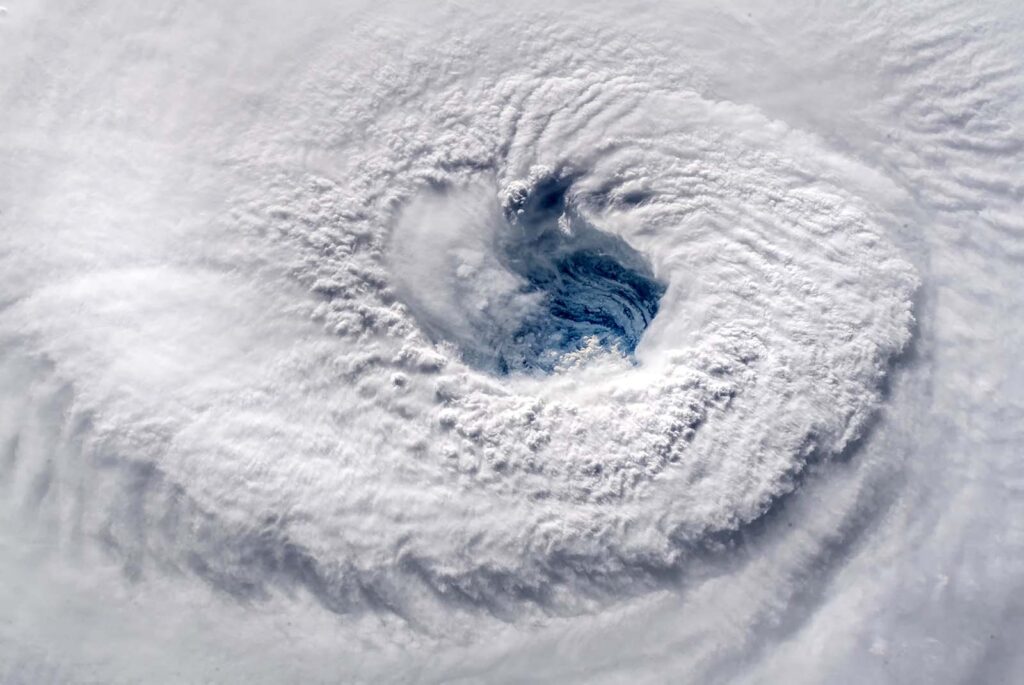
The escalating trend of weather disasters
From the 1980s to the 2020s, the number of billion-dollar weather and climate disasters and their associated costs dramatically increased.
Billion-dollar weather disasters by decade:
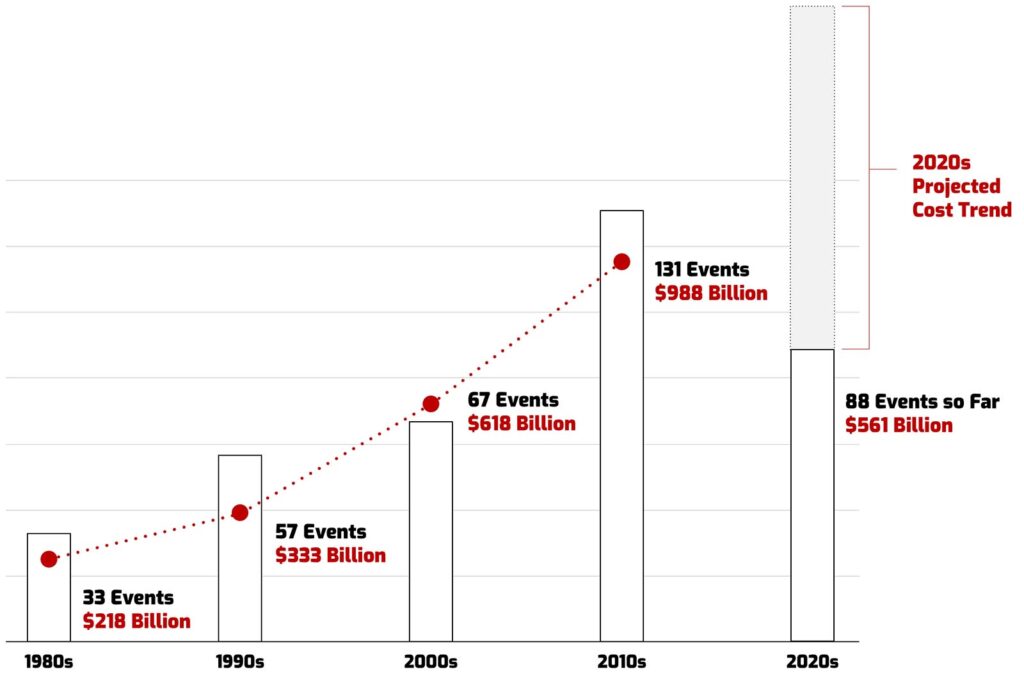
This graph shows the number of billion-dollar weather events (bars) and the total cost of disasters (line graph) in the United States by decade. Data is courtesy of the National Oceanic and Atmospheric Administration (NOAA) and is valid through June 10, 2024
Last year, 28 billion-dollar weather and climate calamities set a new annual record, exceeding the previous record of billion-dollar disaster events, which was 22 set in 2020, according to the National Oceanic and Atmospheric Administration’s (NOAA’s) National Center of Environmental Information (NCEI). Severe storms topped the list in terms of frequency with 19 events, followed by four flooding events, two tropical cyclones, one wildfire, and one winter storm. The losses due to drought and heat also factored into the record-shattering year of costly disasters, ranking second in terms of cost and top in terms of deaths.
In total, these disasters cost the US $94.8 billion in 2023. The total of 387 billion-dollar disasters recorded by NCEI from 1980 into 2024 have cost the US more than $2.7 trillion.
A decade-by-decade analysis of weather disasters
Hurricanes are the most destructive and costly natural disasters in the US, averaging $22.8 billion per event. However, severe thunderstorms are the most frequent weather disasters on the billion-dollar disaster list, with the lowest-average cost at $2.5 billion per event on average. Growing populations, homes, businesses, and other infrastructure in vulnerable areas compound the losses due to the increased severity and frequency of extreme weather events.
Read on to explore how weather and climate disasters have surged in recent decades.
1980s: The beginning of the surge
- Number of events: 33
- Total cost: $218 billion
The 1980s saw the beginning of a noticeable uptick in weather-related disasters, with droughts, flooding, and severe storms being the most frequent and costly.
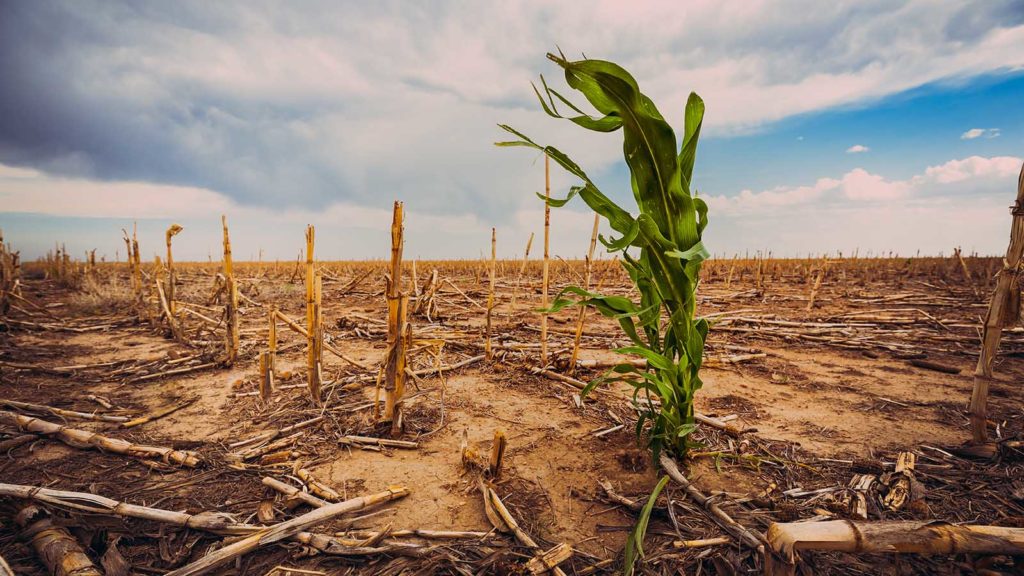
Intense heat and drought plagued the United States from the Midwest to the Great Plains, turning deadly and causing significant economic hardship in 1980
1990s: The rise continues
- Number of events: 57
- Total cost: $333 billion
The 1990s experienced nearly double the number of billion-dollar disasters compared to the previous decade, demonstrating the growing impact of climate change on weather patterns.
2000s: Costs skyrocket
- Number of events: 67
- Total cost: $618 billion
The financial toll of weather disasters surged in the 2000s, with severe storms, tropical cyclones, and other extreme events contributing to significant economic losses.
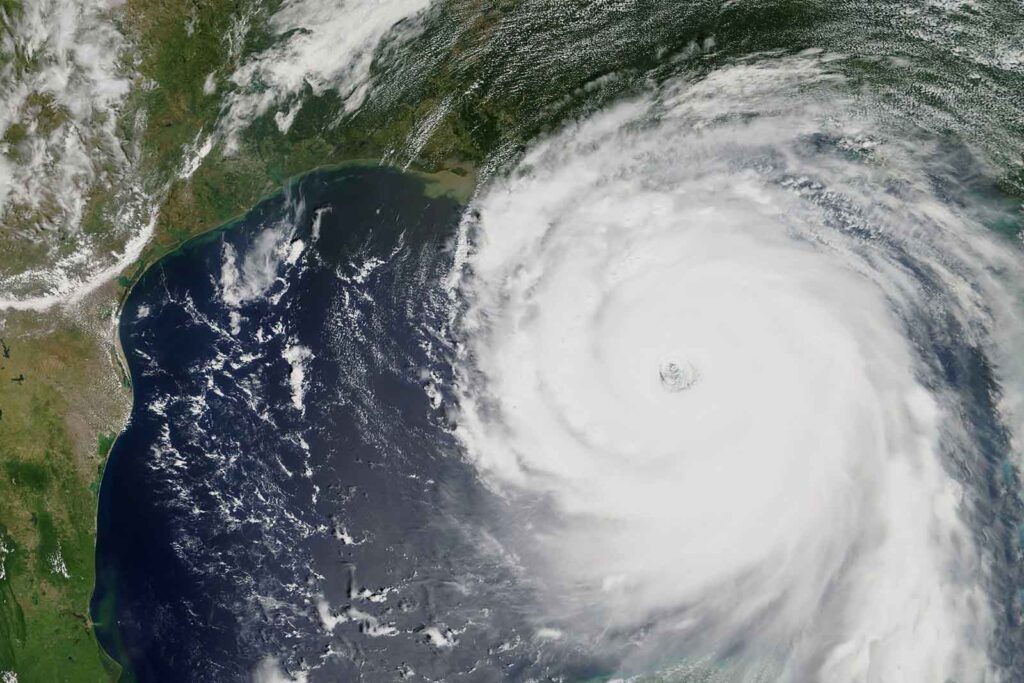
Hurricane Katrina approaching Louisiana as seen from space. The devastating hurricane caused tremendous loss of life and economic losses during the historic 2005 Atlantic hurricane season
2010s: A decade of devastation
- Number of events: 131
- Total cost: $988 billion
The 2010s were marked by an unprecedented number of high-cost disasters, further emphasizing the urgent need for effective risk mitigation strategies.
2020s: An alarming trend
- Number of events (as of June 2024): 88
- Total cost: $561 billion
With the decade not even halfway through, the US is already outpacing the frequency of disasters witnessed during the 2010s. This trend highlights the increasing threat posed by climate change.
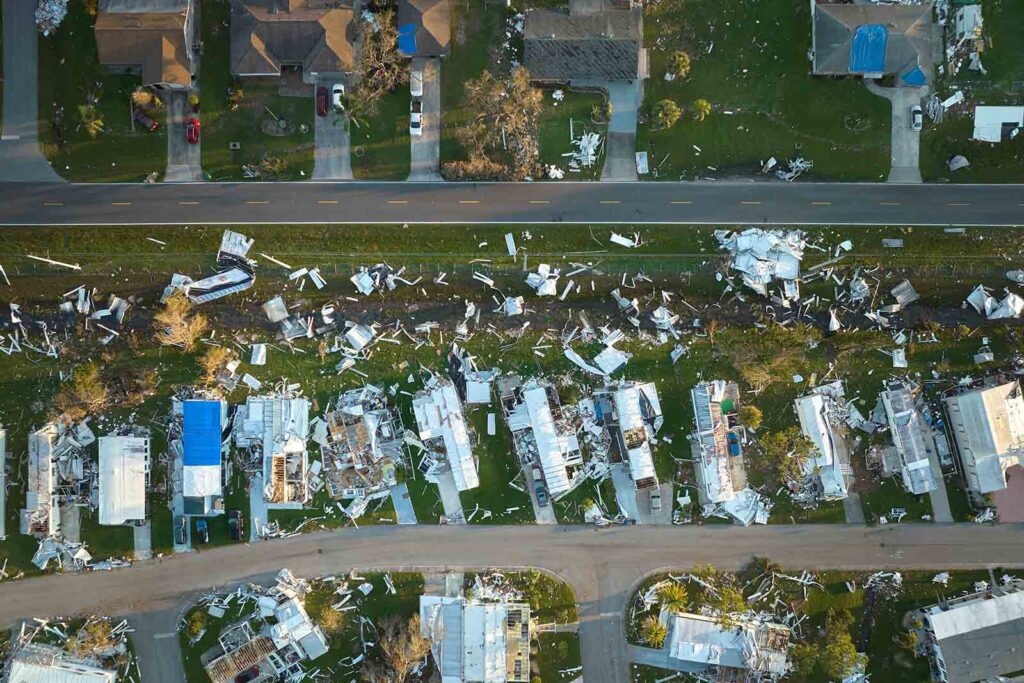
Destroyed homes in Florida following Hurricane Ian, which made landfall as a Category 4 storm in southwestern Florida on September 28, 2022
The impact on the energy sector
As severe storms and other weather disasters become more frequent, the reliability of the electricity grid is increasingly jeopardized. Climate-exacerbated weather disasters particularly put a strain on aging energy infrastructure.
- 92% of major US power outages in 2023 were due to weather-related events, according to the U.S. Department of Energy.
- $5 billion: Potential damage claims against Hawaiian Electric for the deadly and devastating 2023 wildfire, nearly eight times its insurance coverage.
- $87 billion: US power grid investment in 2023, with a significant portion focused on storm resilience.
A report from Climate Central, a non-profit organization of independent scientists, found that 80% (1,755) of all major US power outages from 2000 to 2023 were caused by weather. The majority of weather-related outages were triggered by severe weather (58%), winter storms (23%), and tropical cyclones including hurricanes (14%). In the same period, the following states ranked highest for weather-related power outages: Texas (210), Michigan (157), California (145), North Carolina (111), and Ohio (88).
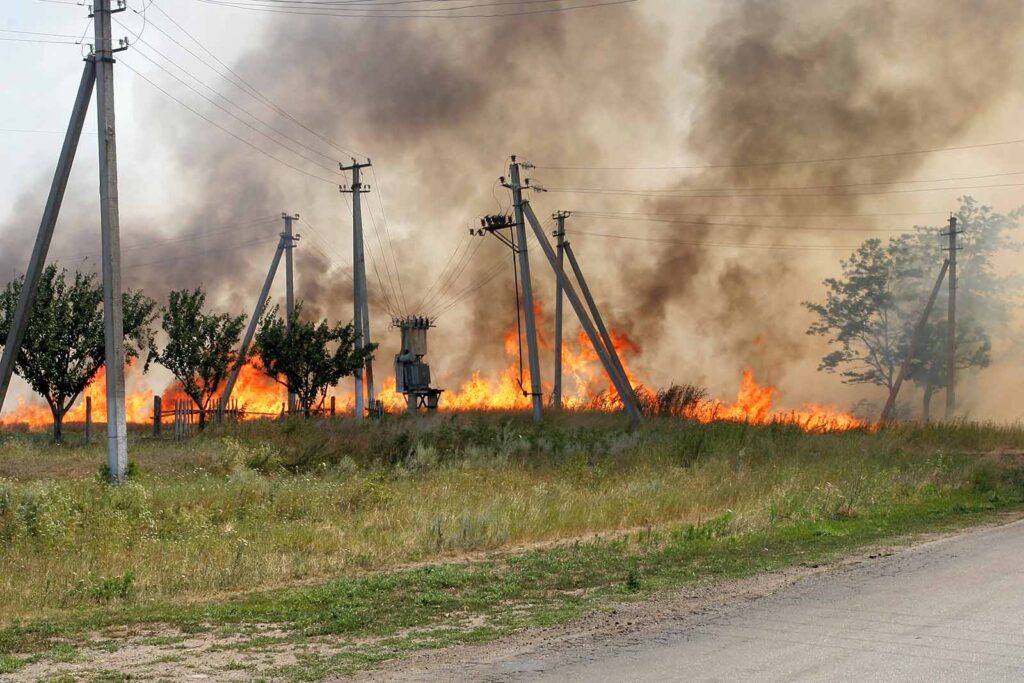
The impact on the insurance industry
With the increasing frequency and severity of weather disasters, the insurance industry faces increasing claims and financial strain.
According to The Conversation, the insurance industry is particularly concerned about extreme weather events since they cause significant damage and destruction that require financial compensation. Hurricanes and severe tropical cyclones are especially noteworthy due to the widespread wind and flooding impacts. Between 2018 and 2022, tropical systems led to economic losses surpassing $450 billion, with less than half of that amount covered by insurance, The Conversation reported.
While hailstorms are considered a secondary hazard in the insurance industry, these damaging events happen more frequently than primary hazards like hurricanes. Insurance companies pay out billions of hail claims annually in the US, and as these weather events intensify, insurers are being hit harder.
This emphasizes the crucial role of the insurance industry in managing the financial fallout from such devastating weather events.
Explore Spire’s Weather & Climate solutions:
Learn more about Spire’s DeepVision™ Weather Support team
Discover Spire’s High-Resolution Forecast
Explore Spire’s Soil Moisture Insights
Preparing for the future
Given the growing impact of weather disasters, it is imperative for businesses and communities to adopt proactive measures to mitigate risks.
- Invest in resilient infrastructure: Strengthening infrastructure to withstand extreme weather events can significantly reduce economic losses.
- Implement advanced weather monitoring support: Utilizing cutting-edge technology to monitor weather in real-time allows for better preparedness and response.
- Develop comprehensive risk mitigation plans: Establishing detailed plans for responding to various weather scenarios ensures that businesses can quickly and effectively address potential disruptions.
- Promote sustainable practices: Reducing carbon footprints and adopting sustainable practices can help mitigate the long-term impacts of climate change.
- Enhance communications with employees and clients: Establishing clear, timely communication channels ensures that all stakeholders are informed and prepared, minimizing confusion and enhancing coordinated responses before, during, and after extreme weather events.
These strategies are crucial for businesses looking to safeguard their operations and financial stability against the increasing frequency and severity of weather disasters. At Spire Weather & Climate, we are committed to helping our clients navigate these risks and building a more resilient future.
We’ve collaborated with industry leaders to bridge the weather data gap in energy and insurance services. From Soil Moisture Insights to an extended High-Resolution Forecast, Spire’s proprietary data gathered from our fully deployed constellation of satellites provides comprehensive insights in a rapidly changing climate landscape. Additionally, our DeepVision Weather Support team is available for consultation in the face of any weather uncertainties.
For more information on how we can assist you in weather risk mitigation, please don’t hesitate to reach out.
 Written by
Written by